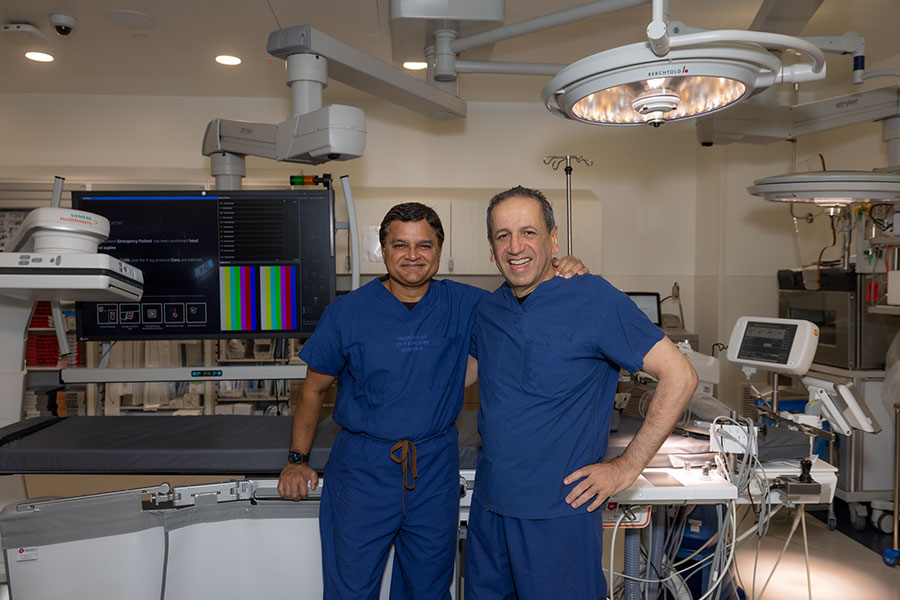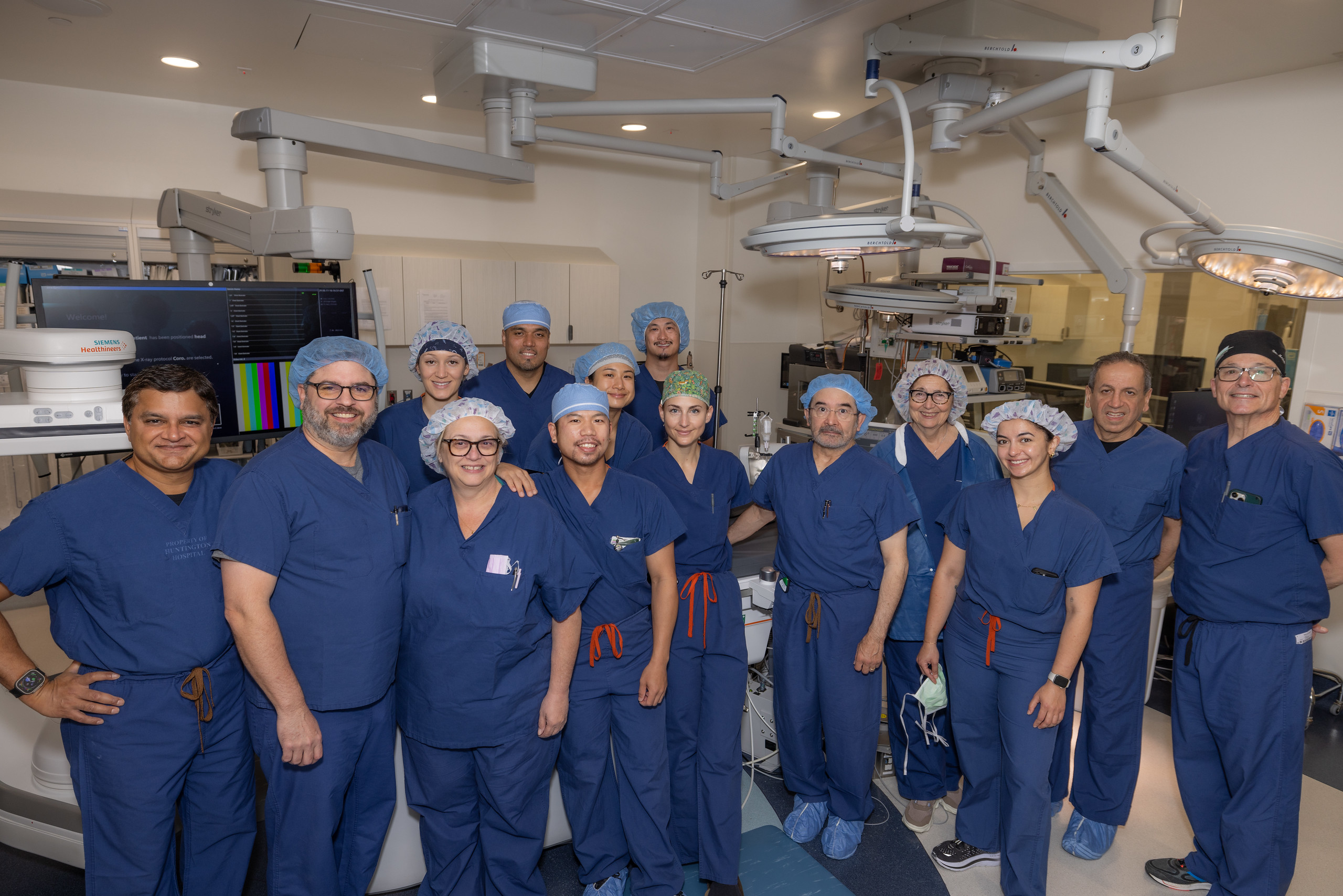An estimated six million Americans are affected by atrial fibrillation (AFib), an irregular heartbeat that can cause blood clots to form in the heart, leading to a stroke. Typically, patients take blood thinners (also called anticoagulants) to lower the risk of stroke; however, this treatment isn’t sustainable and safe for patients who have a risk of bleeding or are prone to falls. Enter the WATCHMAN™ Left Atrial Appendage Closure (LAAC) device, an alternative to blood thinners that stops stroke-causing blood clots from forming in the heart.
In 2018, a patient with AFib received the first WATCHMAN implant in the San Gabriel Valley at Huntington Hospital. Since then, Huntington’s cardiovascular services team has reached an incredible milestone: 500 WATCHMAN procedures performed!
“Only 10 years ago, we had to rely on solely on powerful blood thinners to reduce the risk of stroke with atrial fibrillation,” said Alex Durairaj, MD, medical director, cardiovascular services, Huntington Health. “Now, thanks to the hard work and dedication of our caregivers and staff at the Helen and Will Webster Heart and Vascular Center, we are able to provide another option for lifesaving care to help lower the risk of stroke.”
How it works
90% of blood clots that form due to AFib, occur in the left atrial appendage (LAA), a blind pouch in the left upper chamber of the heart. The device closes off the heart’s left atrial appendage (LAA), preventing blood clots from forming, reducing the risk of a stroke. As specified, the device also gives most patients the greenlight to stop taking blood thinners in as little as six weeks after the procedure.
The procedure

Placement of the WATCHMAN is a one-time procedure performed under general anesthesia and takes about an hour. It comes compressed within a small tube. This allows it to be inserted via a large IV in the upper leg. It is then advanced following the blood vessel into the heart. Once the WATCHMAN arrives at the LAA, it opens like an umbrella and is permanently implanted to block blood clots. Patients commonly leave the hospital the same evening or sometimes the next day.
To date, more than 400,000 patients have received a WATCHMAN implant. Talk to your cardiologist if you would like to learn more about this procedure.
 English
English Espanol
Espanol 简体中文
简体中文 Tagalog
Tagalog հայերեն
հայերեն 한국인
한국인 Tiếng Việt
Tiếng Việt فارسی
فارسی русский
русский 日本
日本 عربي
عربي